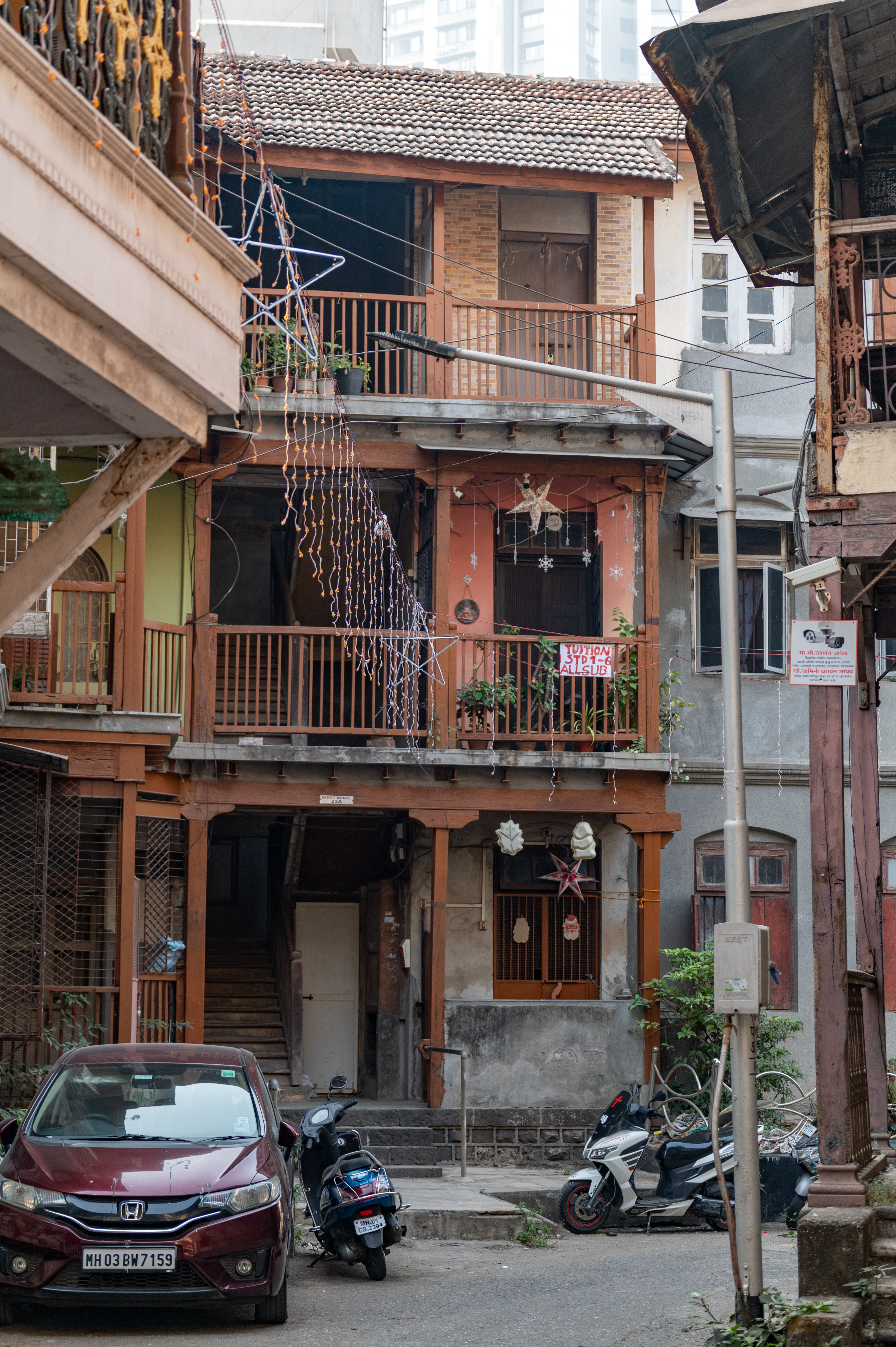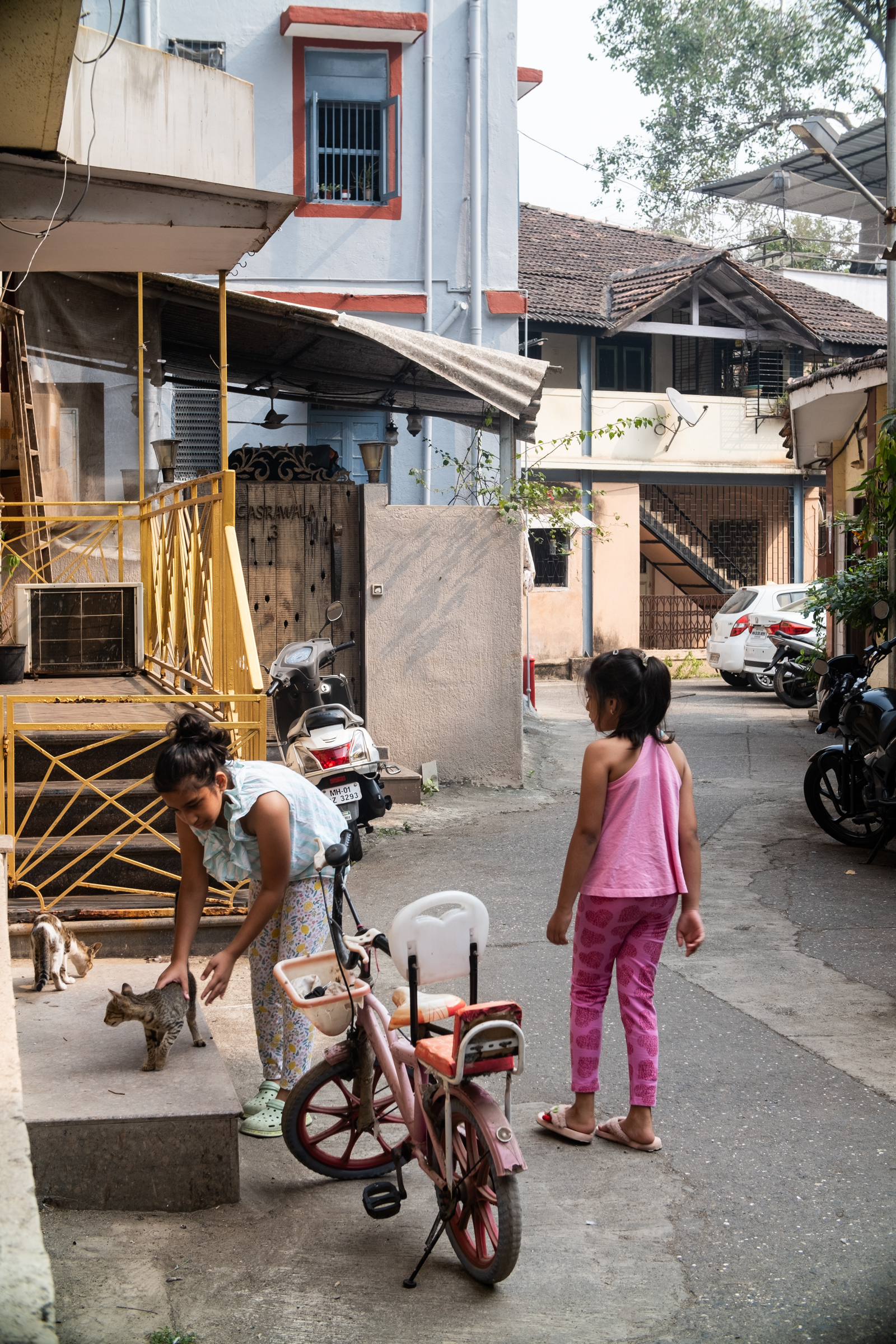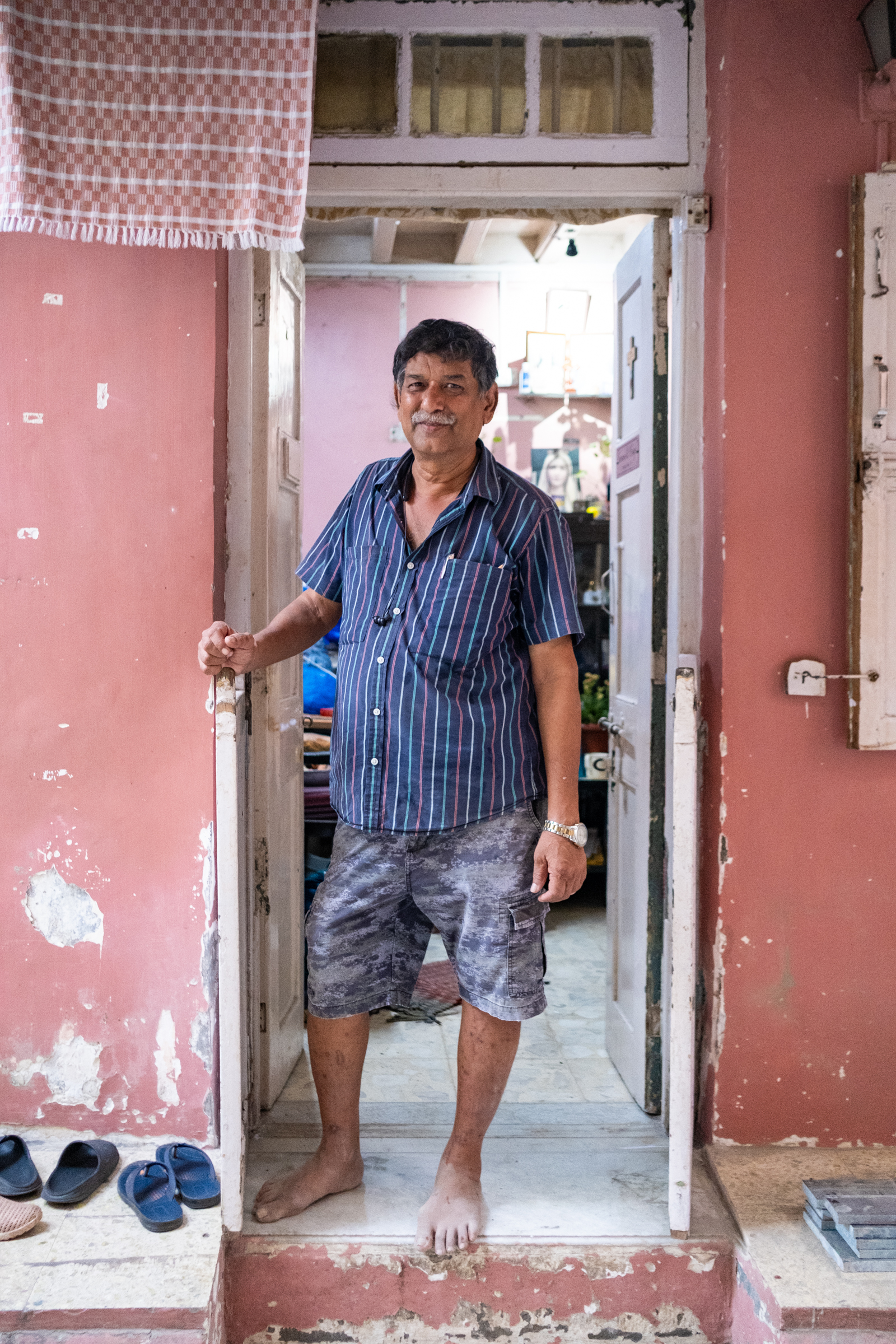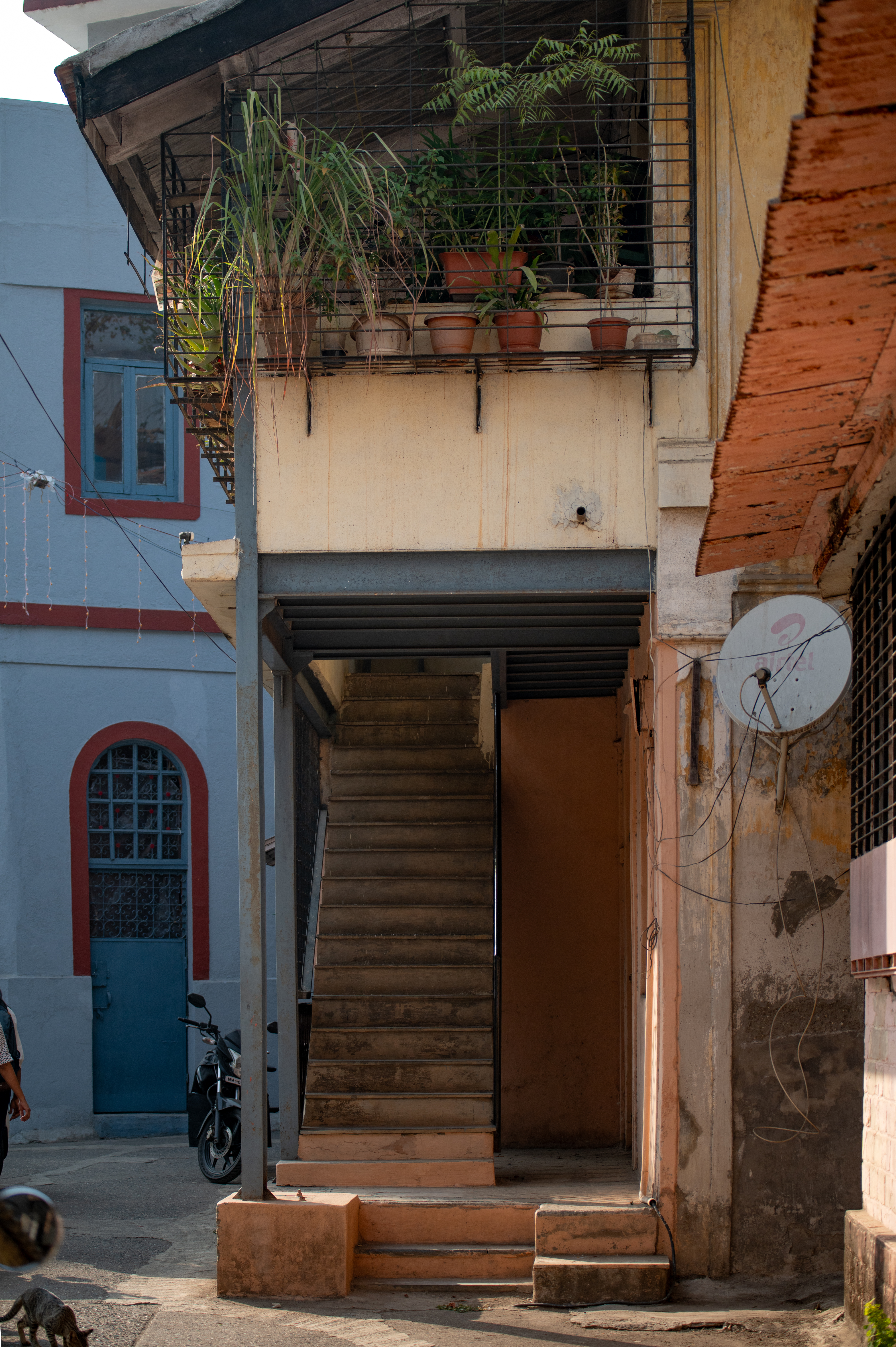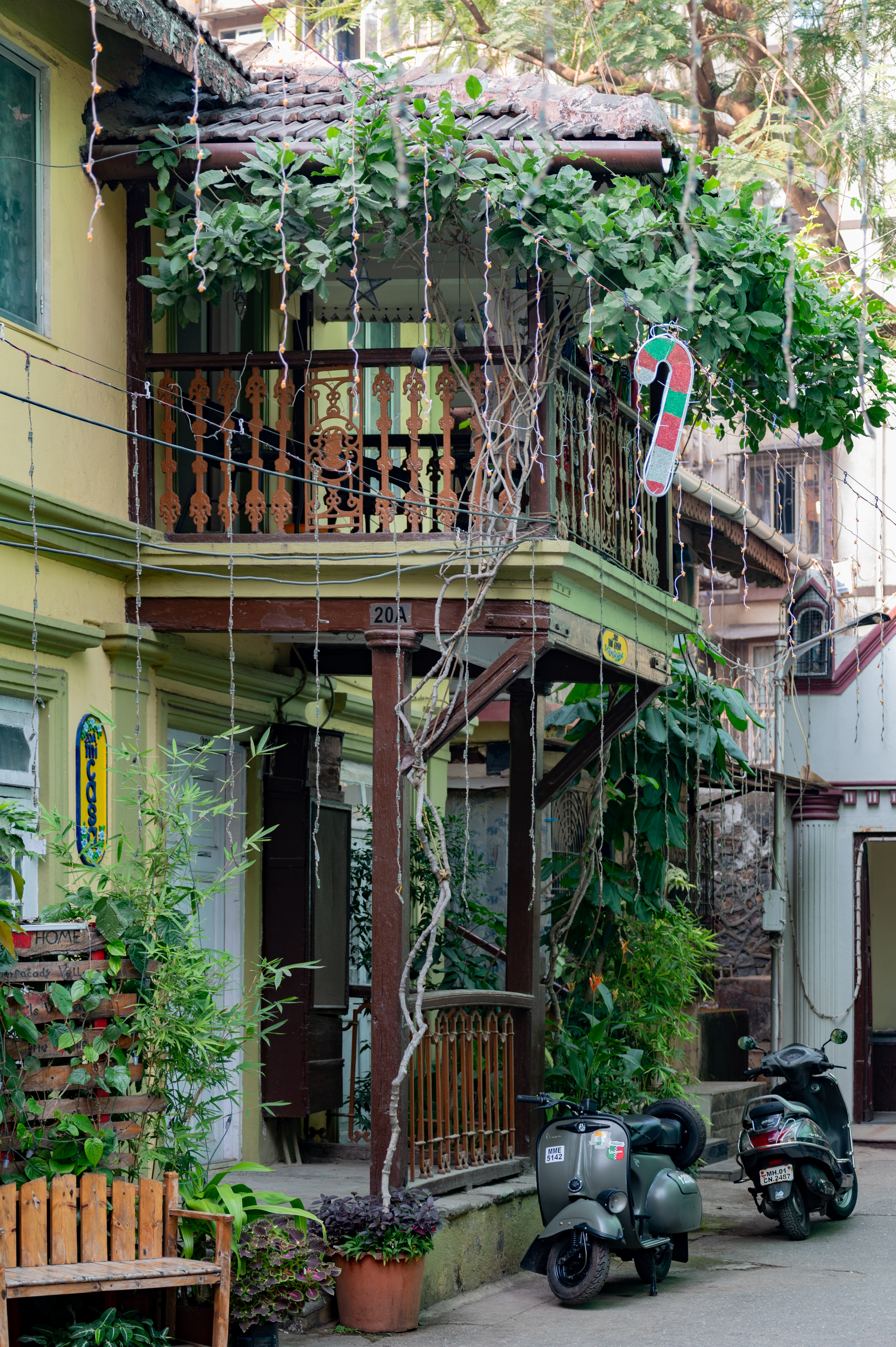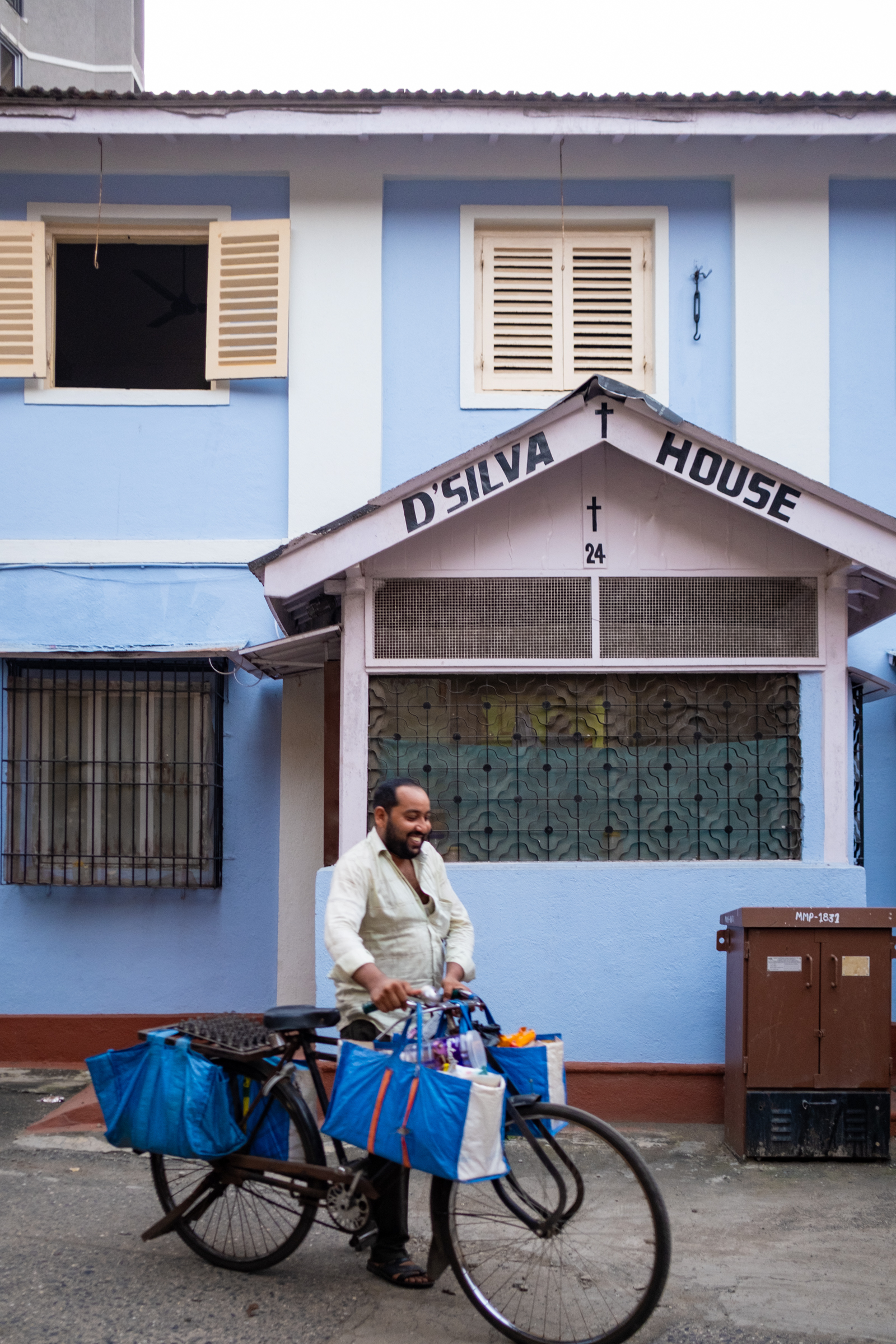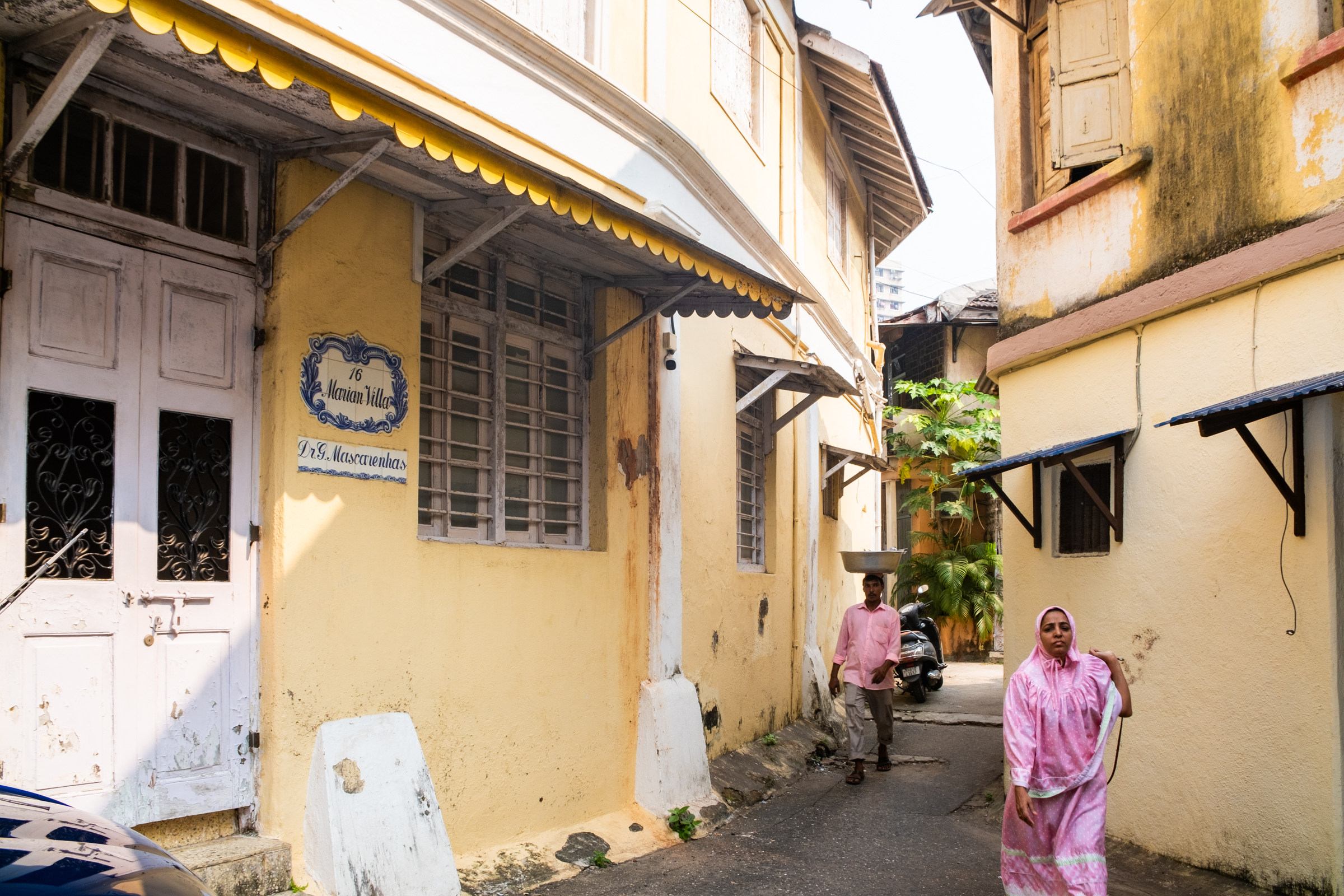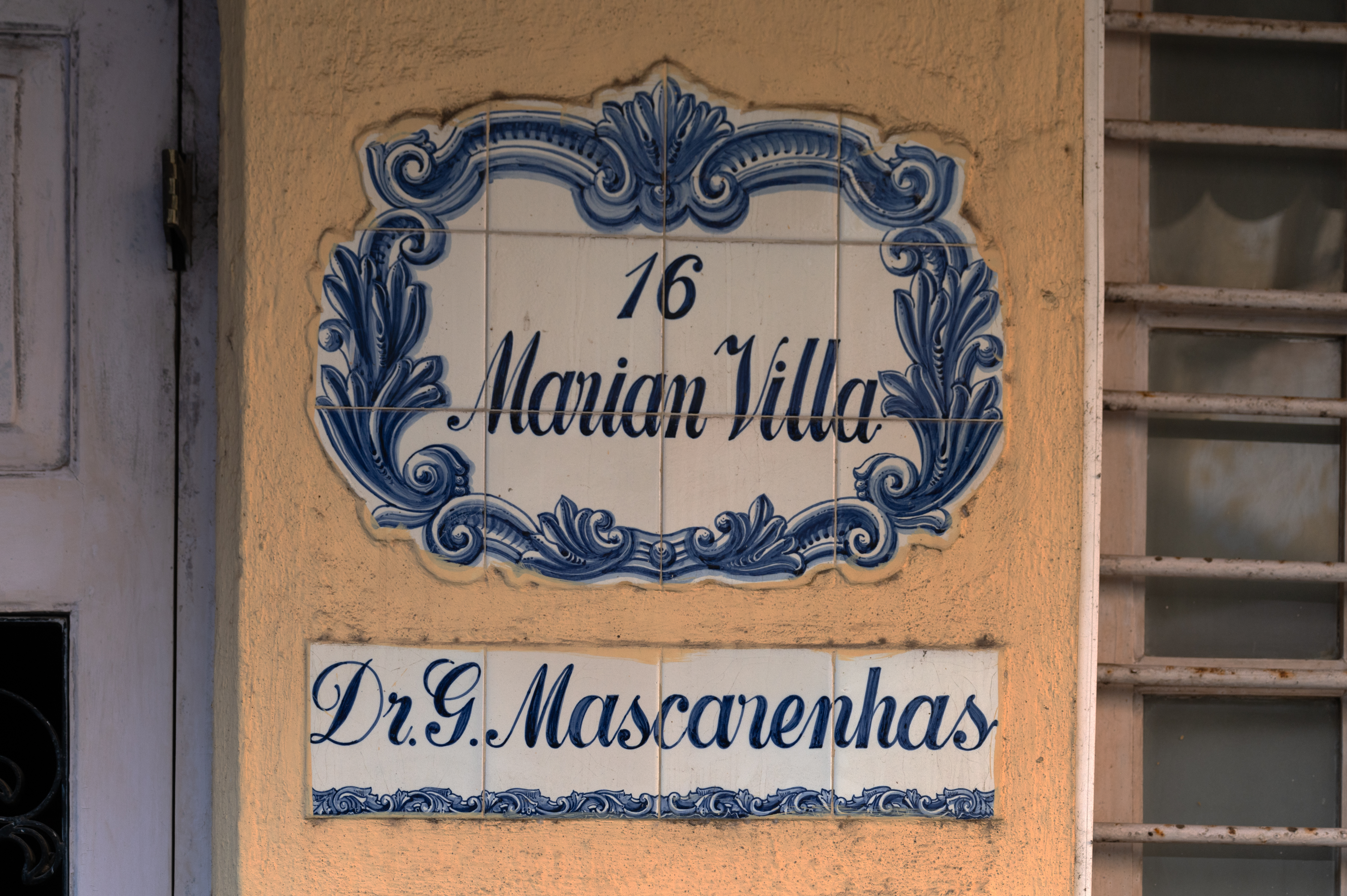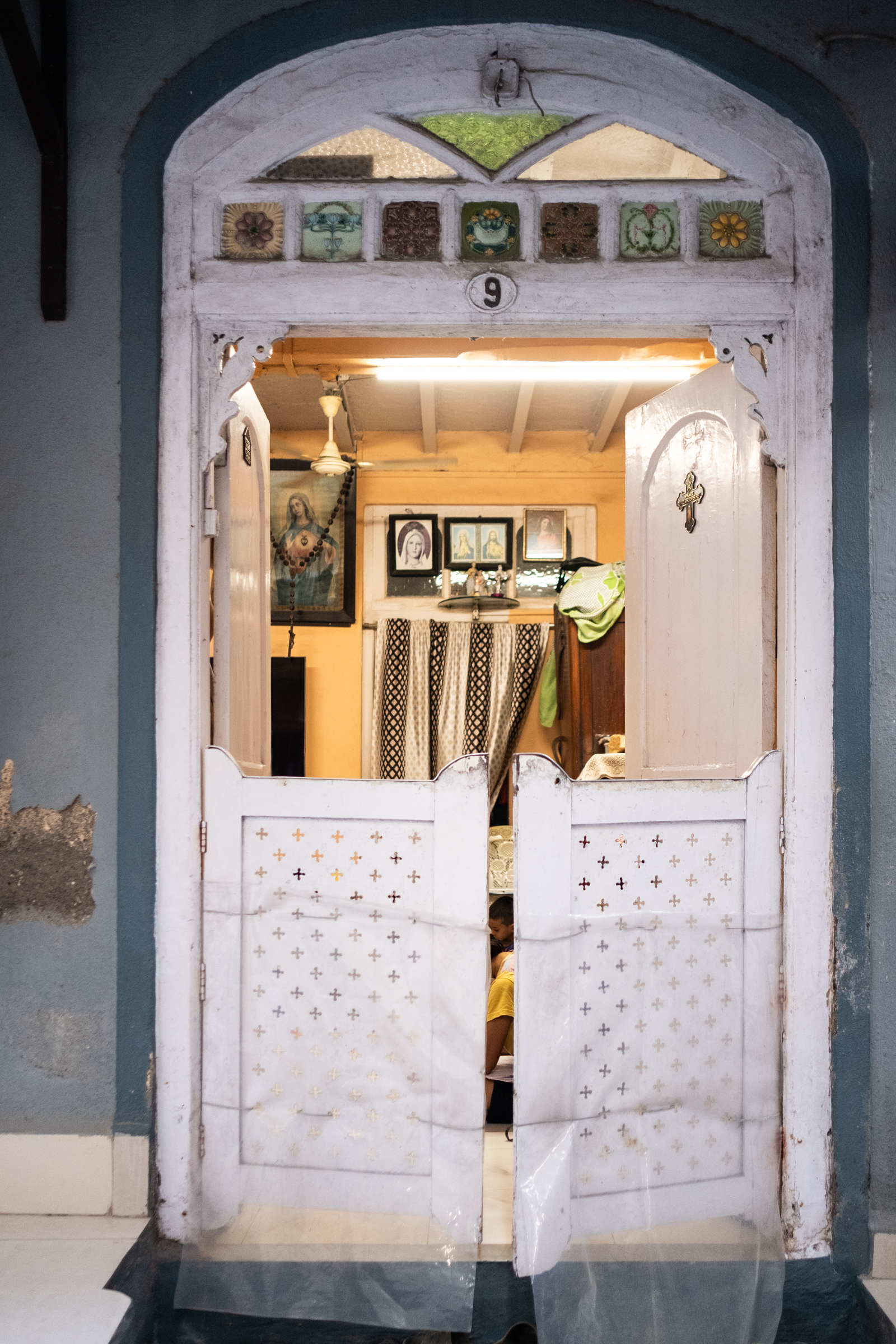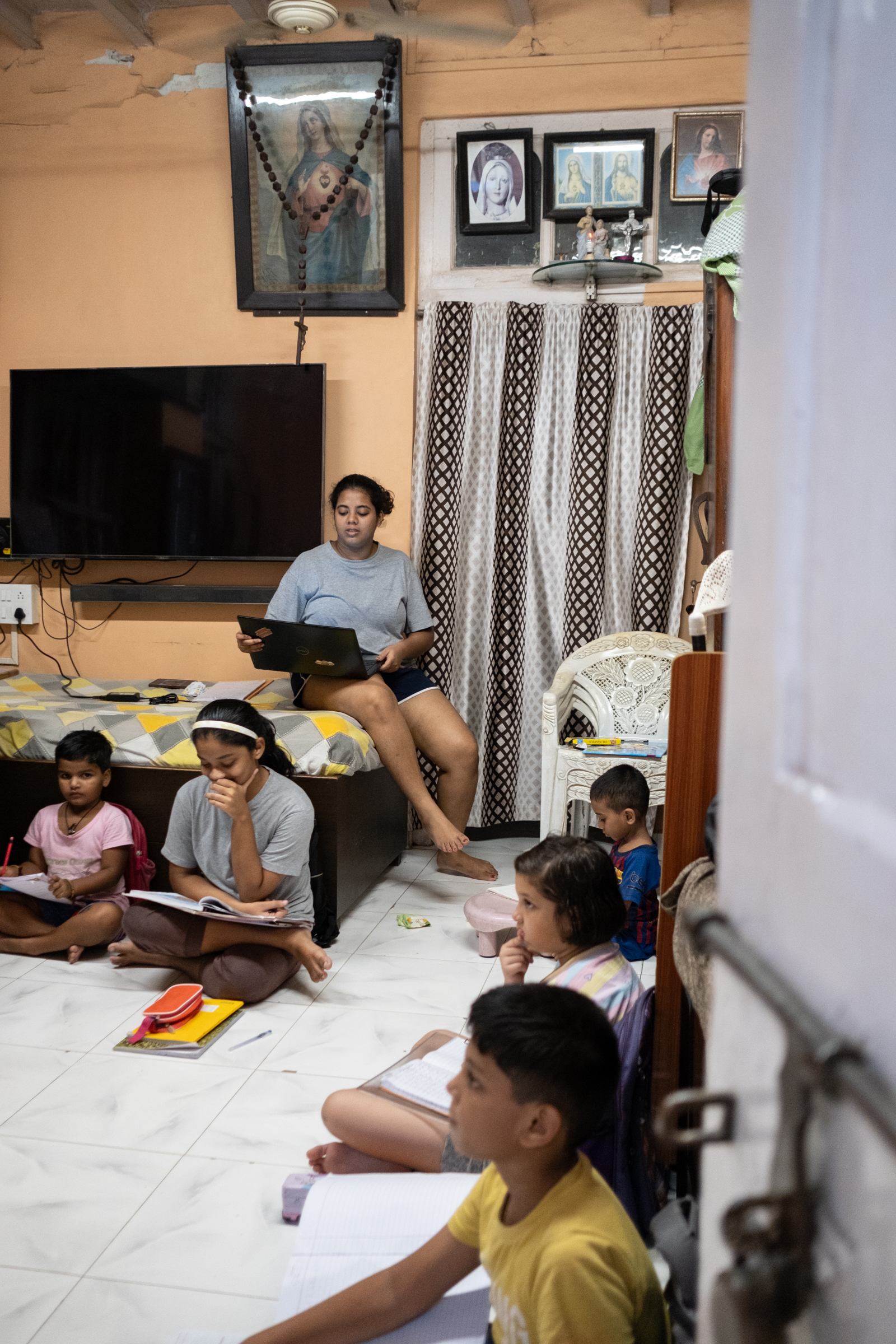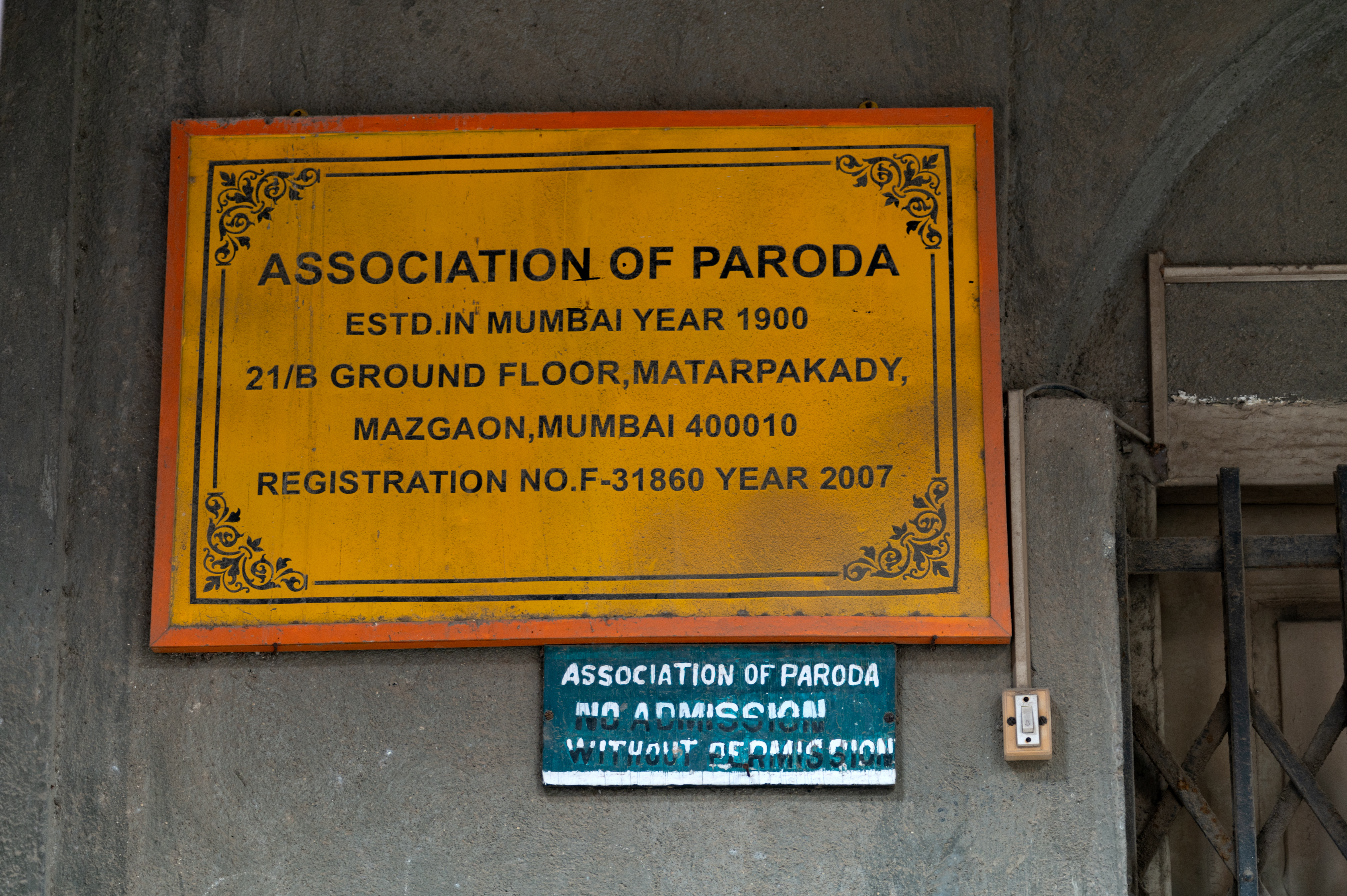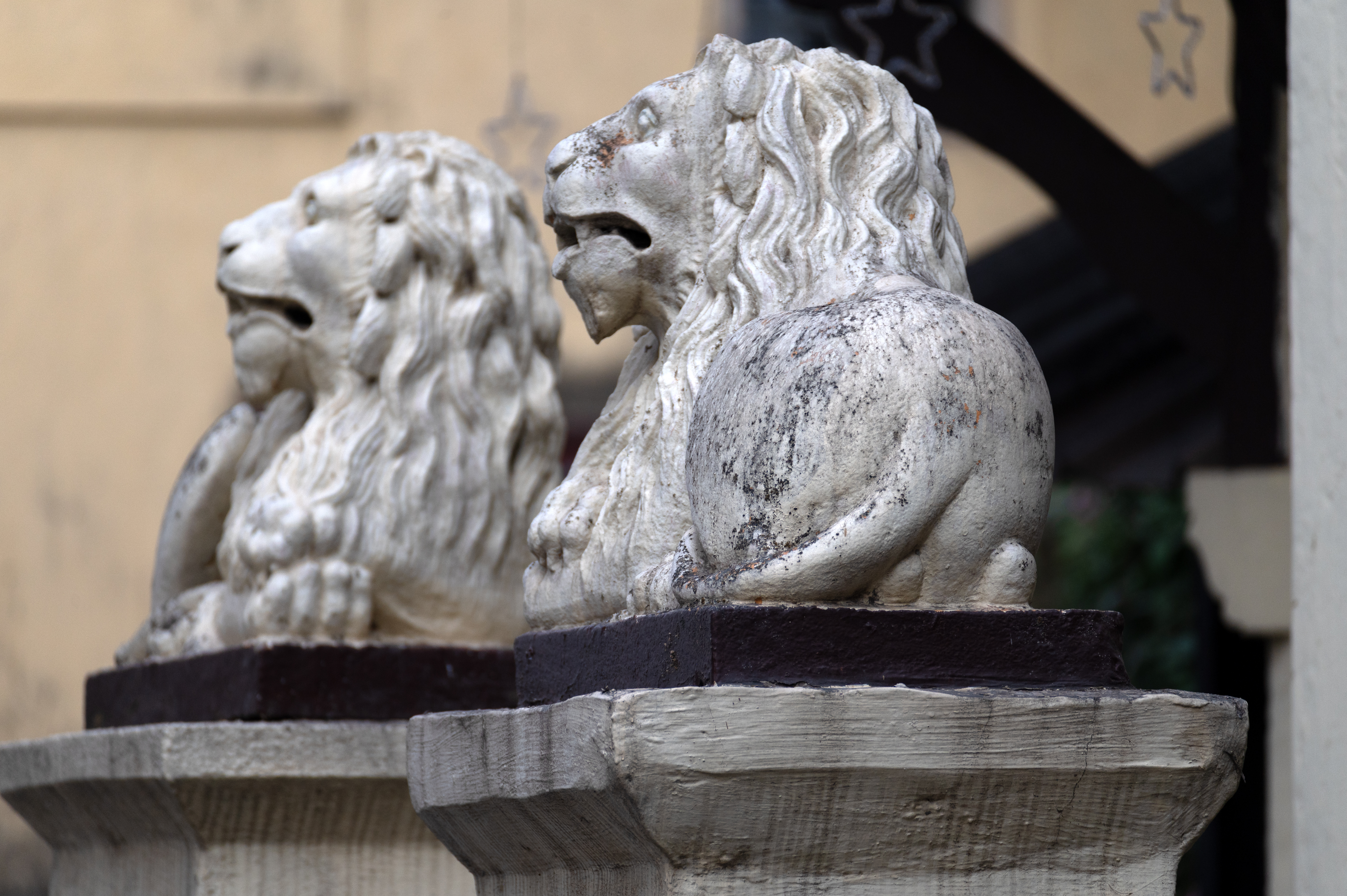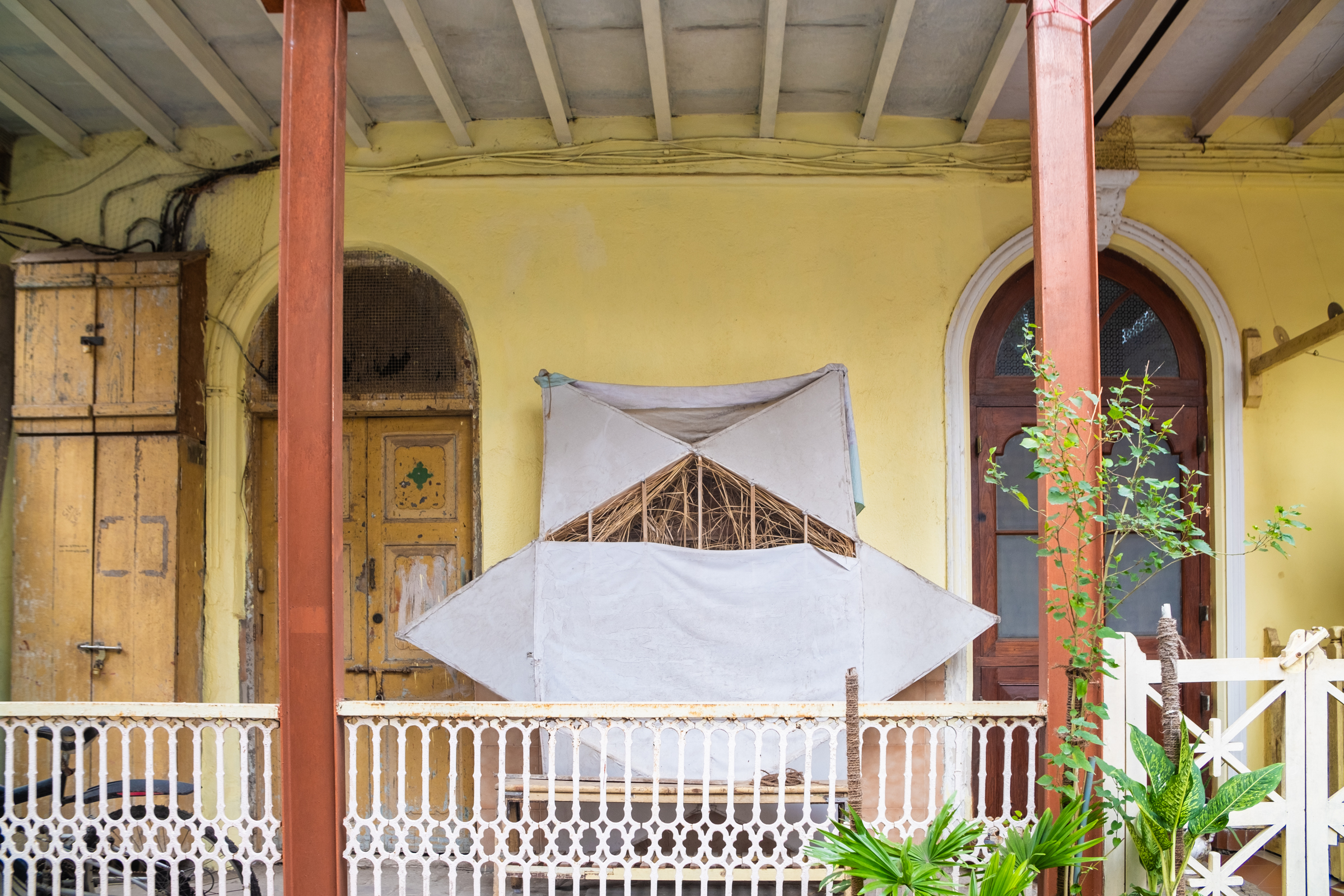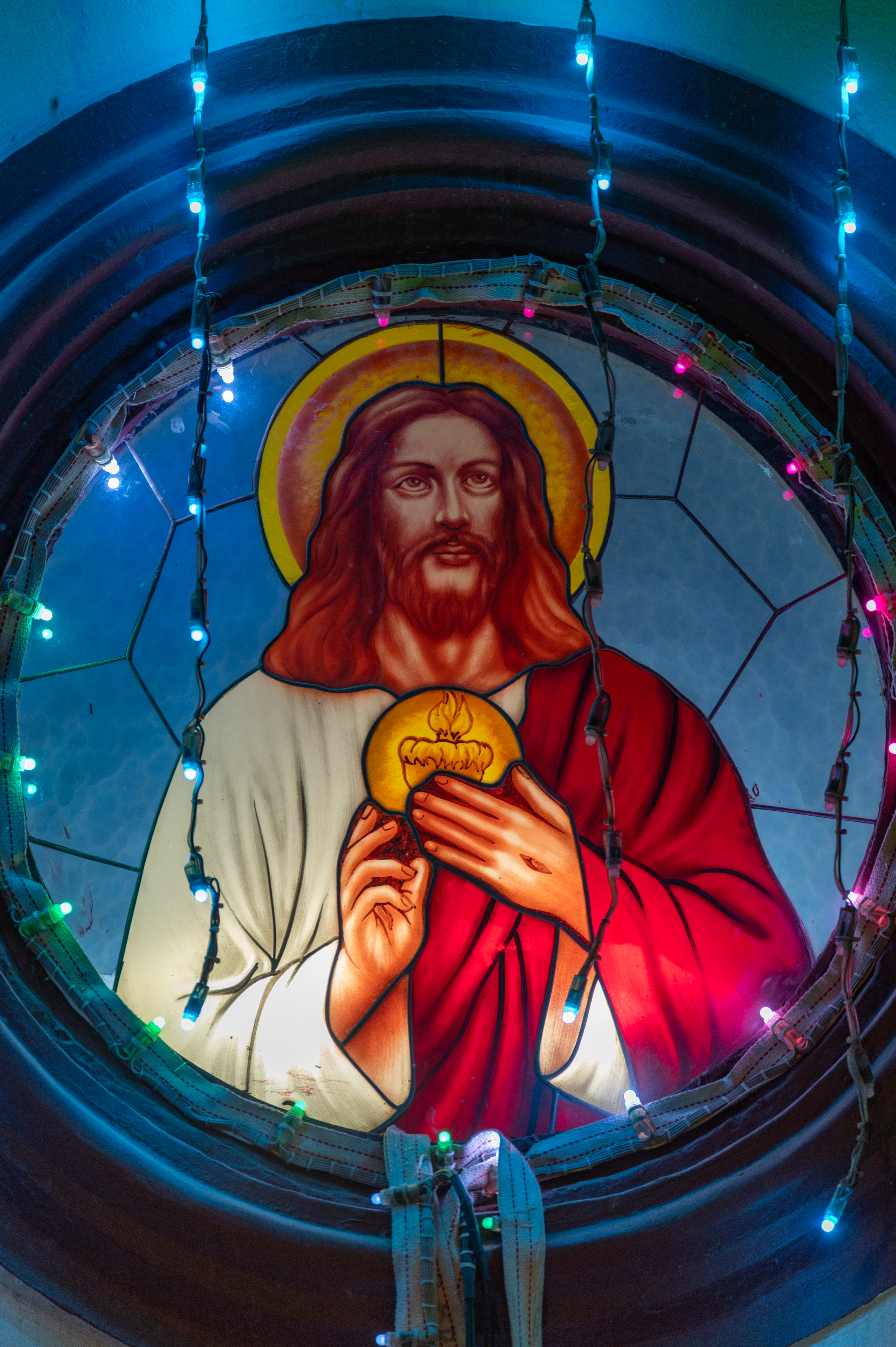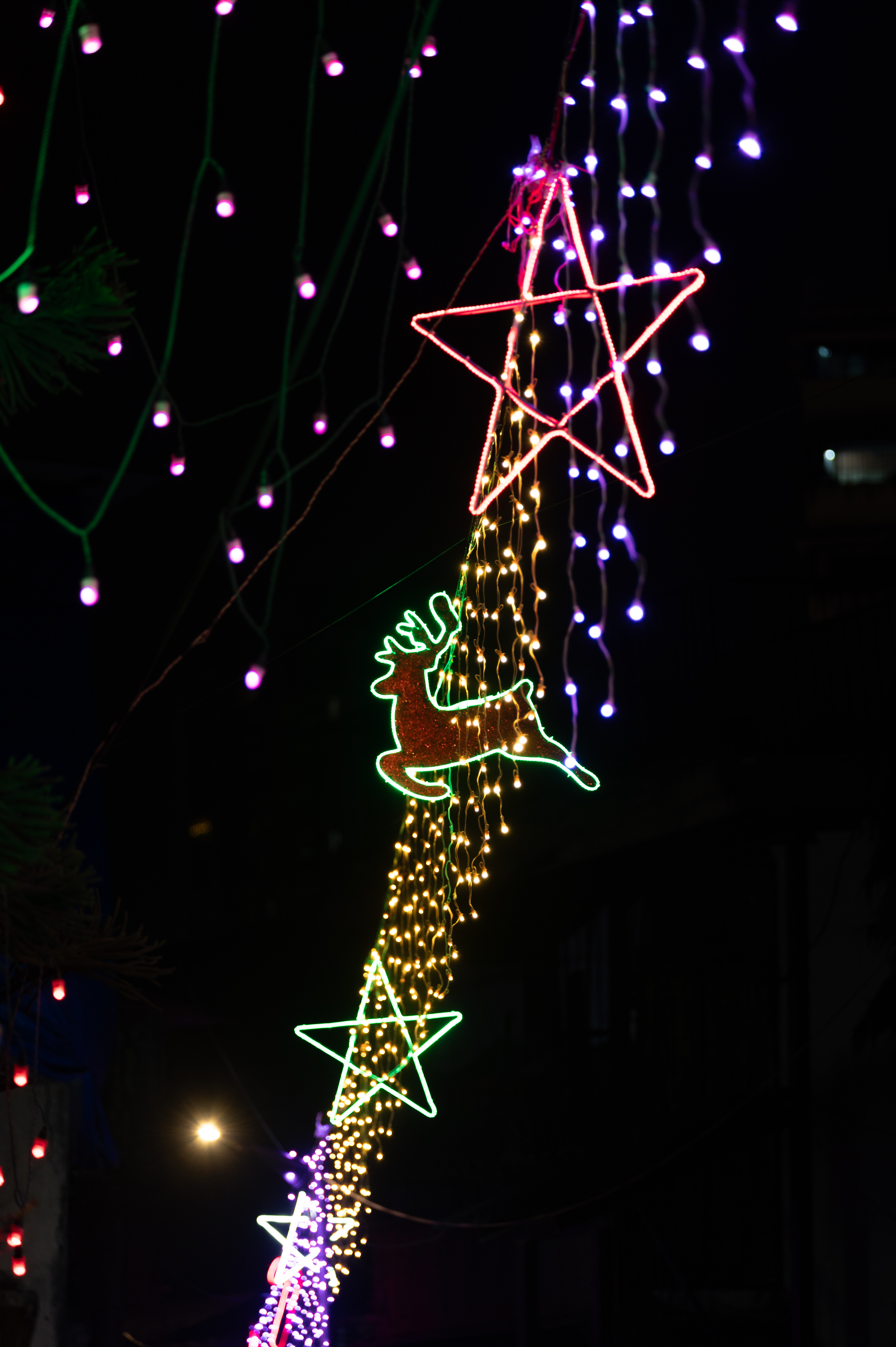Matharpacady: An East Indian Enclave
Time stands still in Matharpacady, a quaint East Indian village (gaothan in Konkani), where its laid-back lifestyle, typical of a Goan village, meticulously weaves the rich tapestry of East Indian culture. Once spread over a large area west of the Mazagaon dockyards, Matharpacady has shrunk considerably in size, as the fecund paddy fields and mango groves surrounding it have disappeared in an ever-expanding urban sprawl. What has survived is a roughly triangular plot of land, housing approximately 50 bungalows, squeezed between R. Naik Road (to the north), Dr. Masceranhas Road (to the west), and Champsi Bhimji Marg (to the south).
Origin of Matharpacady
The Portuguese acquired Mazagaon, one of the seven islands of Bombay, in the Treaty of Bassein, signed in 1534 with Bahadur Shah of Gujarat. The British East India Company acquired the paddy fields surrounding Mazagaon by the mid-18th century and leased them to various stakeholders. In 1749, DN Rustamji and Dhanji Punja leased a portion of the paddy fields west of Mazagaon "to the mhatara for his pay." Mhatara in Marathi means'respected elder’. Over time, the village was referred to as Matharpacady, or 'quarter of the elders', which is the most likely origin of its name. The East Indians, who had lived in Mazagaon for centuries as a Koli fishing village, leased the land. Matharpacady also had strong links with Goa, which was a Portuguese colony for 450 years until its liberation in 1961, when it became a part of India.
The East Indians
The history of the East Indian community is a complex tapestry, reflecting centuries of diverse cultural interactions, historical events, and migration patterns. The community traced its origins to the beginning of European colonisation in the Mumbai Islands, which marked a significant religious and cultural shift among the indigenous communities. During Portuguese rule, Catholic missionaries converted local populations (Kolis, Bhandaris, Agris, Kunbis, etc.) to Christianity, which gave rise to a new community, predominantly Catholic in religion and European in language, dress, and manners, but also influenced by older customs, beliefs, and traditions.
However, as part of Catherine of Braganza's marriage dowry, the British Crown received the islands of Bombay in 1661, ending Portuguese rule. Not interested in governing the sparsely populated islands, the British Crown, in turn, leased them to the British East India Company in 1668 in return for a nominal yearly rent of 10 £. In 1887, the Golden Jubilee year of Queen Victoria, the Portuguese-speaking Catholics of Bombay petitioned the British government to recognise them as East Indians, having their own distinct identity, language, and origin. The community felt this was necessary to separate them from Christians who had migrated to Mumbai from the rest of India or were newly converted Catholics who didn’t speak the Portuguese language.
A unique blend of Architecture
Though they were constructed in different periods by different families, the continuity of design and use of common building materials created a cohesive and harmonious streetscape in Matharpacady. The old bungalows reflect a harmonious blend of East Indian and Portuguese styles and influences, designed to protect them from the monsoon. Some of the distinctive features include the use of Mangalore tiles on gable roofs, a street-facing veranda, an entrance porch, a balcony supported on brackets, arched doors, stone plinths, and staircases running from the outside. The interiors have wooden flooring and showcase antique wooden furniture. Other decorative elements, including finials, ornate windows, coloured glass, ceramic tiles, name plates, and metal balustrades, contribute to the overall charm and individual character of each home. Painted in bright hues of blues, yellows, and reds, they are reminiscent of Goan villas featuring European forms mixed with vernacular elements that add a local flavour. For example, the presence of a street-facing veranda may be rooted in East Indians and Kolis sharing a common ancestry. The front veranda is also featured in Koli homes, where the open space is used for repairing fishing nets. In the past, such quaint bungalows were common in East Indian villages like Bandra and Mazagaon, but many have been demolished and replaced by eyesore structures of glass, steel, and concrete.
Notable residents
The East Indian community became an integral part of the city's social and economic fabric and made significant contributions to Mumbai's development in various fields, including education, business, and social work. Bungalow names such as Lopez House, D'Mello House, Miranda House, Pereira House, and Baptista House, among others, reveal the personal histories of generations-long residents. The village’s most famous son, Joseph ‘Kaka’ Baptista, was born here in 1864. He advocated for community rights and played a key role in the formation of the Bombay East Indian Association in 1887. During the Indian Home Rule Movement, Kaka Baptista was a close associate of Bal Gangadhar Tilak. The Kaka Baptista Gardens, the site of the demolished Mazagaon Fort, near Dockyard Road station, are named after him. Another illustrious resident was Dr. Ubaldo Mascarenhas, whose family lived at Marian Villa. Born in Bardez, Goa, Ubaldo Mascarenhas was also a freedom fighter and served as the 19th Mayor of Mumbai (1948–49). The Portuguese authorities evicted him from Goa and settled him in Matharpacady. Dr. Mascarenhas Road, which borders Matharpacady on the west, is named after him.
Goan community
Matharpacady also had a sizable Goan Catholic community that migrated to Mumbai in search of better job opportunities. They were employed as sailors and cooks on ships, or did sundry jobs in Mazagaon. To save money, Goan migrants preferred to stay in clubs run by the Catholic community, which were affiliated with their native villages in Goa. These clubs (called kudd) provided long-term stays to bachelors at nominal rates. However, most kudds in Matharpacady have closed due to a lack of patronage. Among the historical kudds still operational is the Association of Paroda, established in 1900.
Outward migration
Over the years, there has been an exodus of old-time residents who have migrated to other parts of Mumbai or settled abroad. Soulless high-rise apartments have replaced many bungalows. Not even Kaka Baptista's house escaped the destruction. A high-rise apartment now stands on its plot, behind the Holy Cross Oratory. The arrival of new migrants has also changed the demographics of the village, which was predominantly Catholic in the past. Matharpacady is now more multicultural, with diverse communities living together in peace and harmony. It is not unusual to find Hindus, Parsis, and Muslims staying as tenants in the same building, on different floors, with an East Indian landlord living on the ground floor.
Conservation efforts
In response to redevelopment pressures, residents have formed the Matharpacady Residents Welfare Association (MRWA), which lobbies for the preservation of the historical village. The MRWA's advocacy in recent years has increased awareness and prompted efforts to conserve Matharpacady. Mumbai's urban heritage laws have listed the village as a Grade III precinct, which includes buildings and precincts of significance for the townscape. These buildings and precincts evoke architectural aesthetics, contribute to defining the locality's character, represent the lifestyle of a specific community or region, and can also stand out due to their unique façade setting, uniform height, width, and scale. However, the lower-grade listing provides the area with no protection from land sharks, and encroachment remains a threat. Despite financial challenges in maintaining the Grade III buildings, the residents are determined to preserve Matharpacady, where each house contributes to the timeless allure of this hidden gem in the heart of Mumbai.
Matharpacady (or gaothan in the local language) is a historic village in Mazagaon, wedged between R. Naik Road and Champsi Bhimji Road. The East Indian community settled the Gaothan more than two centuries ago, possibly even earlier. Over time, due to the original East Indians migrating to other parts of Mumbai and emigration to foreign countries, various other communities have moved in and made Matharpacady their home.
Matharpacady has a network of lanes and alleys where children play games and have fun with neighbourhood cats. The idyllic setting of the gaothan, away from the din and chaos of the city outside, is reminiscent of susegad, typical of the Goan culture. Derived from the Portuguese sossegado (meaning 'quiet'), it is used to describe the relaxed, laid-back attitude towards life that defined the lifestyle in the former Portuguese territory.
The area around Matharpacady was renowned for mango groves and paddy fields. According to the book "Bombay: The Cities Within," DN Rustamji and Dhanji Punja leased a portion of the paddy fields west of Mazagaon in 1749. Over time, they became known as mhatre, which means'respected elder' in Marathi. Consequently, the neighbourhood became known as Matharpacady, which translates to 'quarter of the elders'. The mango groves are now long gone, but the green cover has survived in some parts.
Lawrence D'Souza, an East Indian, is undertaking renovations at 11 Matharpacady. For more than two centuries, the East Indians have lived at Matharpacady. The East Indians—as recorded in history—are the original inhabitants living on the seven islands of Bombay, Salsette, and Bassein (Vasai). During the 16th and 17th centuries, when the Portuguese governed Bombay, missionaries converted various native communities to Catholicism.
Most of Matharpacady's bungalows are double-story, with balconies on the first floor supported by rows of wooden brackets. Furthermore, columns on the ground floor may support the balcony above. Most of the bungalows have wooden flooring and gable roofs covered in tiles. Such details are typical of Indo-Portuguese architecture found in other East Indian gaothans in Mumbai, like Khotachiwadi.
Typically, staircases are located on the outside. This saved space inside the houses and allowed independent access for tenants living on the first floor. Originally, balconies were open, with a wooden or metal balustrade running around them. Metal grilles installed from the outside have enclosed some balconies over time, allowing for plant storage or use as an extension of the living quarters.
The metal balustrade on the balcony at Mi Casa, 20A Matharpacady, features portraits of Queen Victoria, clearly installed in the late 19th century during her rule. The name Mi Casa means ‘My Home’ in Spanish. Similar to Mi Casa, the majority of the approximately 40 surviving heritage bungalows in Matharpacady showcase bright colours, a characteristic of Indo-Portuguese architecture prevalent in neighbourhoods such as Fontainhas in Panjim, Goa.
A bread vendor pedals his goods in front of D'Silva House, 24 Matharpacady, which is the residence of Mr. Trevor D'Silva. His sister, Joan Saint-Prix, is the grandnephew and grandniece of Joseph 'Kaka' Baptista (1864–1930), an Indian freedom fighter and a prominent figure in the East Indian community. In Matharpacady, Kaka Baptista was born in 1864 in his ancestral house, now demolished to make way for a high-rise building. Kaka Baptista was a barrister at the Bombay High Court who was closely associated with Bal Gangadhar Tilak. The Bombay Municipal Corporation elected him as its mayor in 1925.
Mascarenhas Road, bounding Matharpacady on the west, is named after Dr. M. Ubaldo Mascarenhas, who hails from Bastora village, Bardez, Goa. After facing eviction from Goa, he went on to become the 19th Mayor of Mumbai (1948–49). The descendants of his family still live at 16 Matharpacady. The family includes Dr Gerald Mascarehnas and Dr Allwyn Mascarenhas (D. Ubaldo’s grandnephews), who serve the community as medical doctors. Another descendant, Vincent Mascarenhas, is currently president of the Matharpacady Holy Cross Committee.
Marian Villa is among the better-preserved Portuguese-style bungalows in Matharpacady, home to the Mascarenhas family. The nameplate features Azulejo tiles, akin to those found in Goan homes. Arabic in origin, these blue and white tiles were produced by the Spanish from the 14th century onwards to decorate their churches and monasteries. The Portuguese imported the tiles from Spain and, in the 17th century, started exporting them to their colonies, from which they reached Goa.
A coconut vendor outside Mary Lodge, which is commonly referred to as David and Stanny’s house. The bungalow's ground floor still bears the remnants of classroom numbers from the establishment of St. Isabel's Primary School, which aimed to advance female education. The Ladies Charitable Association, Mazagaon Circle, established the school and held its first class on November 9, 1887, with 40 students and two teachers. Later, St. Isabel’s Primary School relocated to Tank Square and, thereafter, Mount Road (39, Dr. Masceranhas Road), where it stands now.
22 Matharpacady was the ancestral residence of the Miranda family. Peter Miranda, the former principal of St. Isabel School, was among its members. Under his leadership, St. Isabel won accolades as one of the leading Christian schools in the neighborhood. He was also a piano virtuoso, and the house was a venue for theatre, singing, and dancing. Edward Miranda generously gifted the house to the Blessed Sacrament Fathers in 2006, renaming it Eymard Cottage.
Atmaram is the village mochi (cobbler), plying his trade in the footsteps of his father, who also worked in Matharpacady. His tiny workshop is a hole-in-the-wall located below a staircase at 31 Matharpacady. His customers wait on stools as he goes about repairing their bags and shoes. This is among the rare shops inside Matharpacady, which is otherwise entirely a residential zone.
This old home, located at 9 Matharpacady, has batwing doors (double swinging doors) at the entrance, preserving its historical character and charm. Colourful tiles with floral motifs, each unique from the others, decorate the lintel above the door.
Tuition classes are taking place inside 9 Matharpacady.
Antique wooden furniture furnishes the interiors of 20A Matharpacady. The eclectic collection of curiosities displayed inside the vitrine were acquired from various corners of the world, reflecting the family's extensive travel history and maritime activities. The vitrine was meticulously crafted by a Chinese craftsman, specially summoned for this task, who made it in the confines of this home.
The windows at 22 Matharpacady feature stained glass artwork that portrays Mother Mary and the infant Jesus on the right panel, and the Holy Communion on the left panel. The Miranda family donated the house, renamed it Eymard Cottage, and opened it as the Provincialate (HQ) of the SSS Order on September 14, 2006. It has a Blessed Sacrament Chapel and offers a daily Mass for senior citizens of the gaothan.
Despite its proximity to the sea, Mazagaon had an abundant freshwater supply. Before tap water became available inside homes, the only sources of drinking water were wells. This is Matharpacady's central well, located in a circle known as the Brahmin Chawl. This was once the only source of fresh water, but it is no longer used and remains covered up. In addition to this public well, there were also private wells inside houses.
Matharpacady has a strong historical connection with Goa and Goan Christians. The neighbourhood has several kudds, or dormitories, that provide accommodation to migrant workers from Goa at a nominal fee. Clubs from Goa villages manage the kudds and serve as their patrons. The Association of Paroda, based in Paroda village in Salcete taluka, South Goa district, operates this kudd at 21/B Ground Floor, Matharpacady. It was established in 1900.
Kudd in the Konkani language means 'room'. In the 1950s, Matharpacady housed dozens of kudds, which catered to expatriate Goans working as sailors or in the dockyard in and around Mazagaon. Kudds offered them a home away from home. However, with Goa's integration with India in 1960 and the rise of tourism in the 1980s, migration from Goa declined. Many kudds have closed due to a decline in occupancy, and the ones remaining are run-down. Seen here, at the end of the street, is the Paroda Kudd, at 21/B Matharpacady.
The Lion’s Den bungalow is named after the twin lion-mounted gate posts. Darius the Mede, King of Babylon, threw Daniel into the lion's den in the Biblical story, which is associated with the lions. The God of Israel, pleased by Daniel's blameless character, sent an angel to close the lions' jaws. As a result, Darius released Daniel from the lion's den without harm.
The Leao family calls Lion's Den home. Built in 1892, the yellow-painted, two-story house is located at 85 R Naik Road. It has a sprawling open balcony running along the perimeter of the first floor, complete with decorative metal grille balusters. The staircase to the first floor is located outside (to the left). It is one of the best-preserved houses typical of Indo-Portuguese architecture, and it has changed little in over 130 years of existence.
Lopez House, at 23D Matharpacady, was the residence of Lt. Cdr. Eric Lopes and his daughter, Dagmar Lopez. On Sundays, Dagmar played Western music on the musical saw (a popular vaudeville instrument that looks like a flexible carpenter’s handsaw, played with a bow drawn across the non-toothed side by holding the handle between the knees and bending the blade while bowing along the flat edge), accompanied by his brother Ian Lopes on the guitar.
On the veranda at Keep Sake, 20 Matharpacady (built in 1928), women strike up a conversation. The tightly spaced bungalows enable residents to interact with each other and socialise on the veranda. Koli villages typically feature a long veranda, where residents use the open space at the front to repair fishing nets. This common characteristic is also seen in the bungalows of the East Indian community, whose ancestors were Kolis and other native communities before they were converted to Catholicism.
The six-pointed Star of Bethlehem is associated with the Nativity story. The star served as a navigation aid for the three wise men who visited the manger where Jesus was born. It represents the divine light and hope brought into the world by Jesus Christ's birth. This star of Bethlehem, stored in the open veranda at 20 Mataharpacady, will be hoisted during Christmas.
The Holy Cross Oratory is the most notable religious landmark in Matharpacady. This small chapel was built on land donated by Mrs. Buthello and constructed in response to a devastating plague that struck the city in 1875 (another plague struck in 1896). The residents came together to collectively build the chapel, praying for the plague to spare the village. Miraculously, not a single death occurred in the plague at Matharpacady, and the community has maintained the tradition of holding yearly feasts, now in its 148th year.
The patron saint of the Holy Cross is St. Roch, who is especially invoked against plague, cholera, and epidemics. The Managing Committee of the Holy Cross Oratory traditionally organises the nine-day Novena Services every year, held in the late evening from April 22 to April 30. This is the stained glass portrait of Jesus Christ on the chapel's rose window, illuminated during Christmas.
Christmas and the Feast of the Holy Cross are the best times to experience Matharpacady's distinct East Indian character. In early December, in preparation for Christmas, the gaothan becomes a hub of activity and continues until New Year's celebrations. During Christmas, the Managing Committee of the Holy Cross Oratory and the Residents' Welfare Association work in unison to decorate Matharpacady Village's lanes with decorative lighting.
The residents of Matharpacady create entirely handmade new installations every year during Christmas. The reindeer Rudolf and Dasher pull the sleigh, while Santa Claus drives it across the night sky. The sleigh was very popular with the neighbourhood children, who were thrilled to take a ride on it and get their pictures clicked.
During Christmas, Matharpacady comes alive at night. Every house is given a fresh coat of paint and the Star of Bethlehem is hung from the balcony. Lights and illuminated symbols such as reindeer, candy sticks, bells, stars, snowflakes, and fairies adorn the lanes. The entire gaothan, irrespective of community and religion, celebrates Christmas. Inside the homes, families come together to decorate Christmas trees and install miniature nativity scenes.
